#september 20th 1934
Text




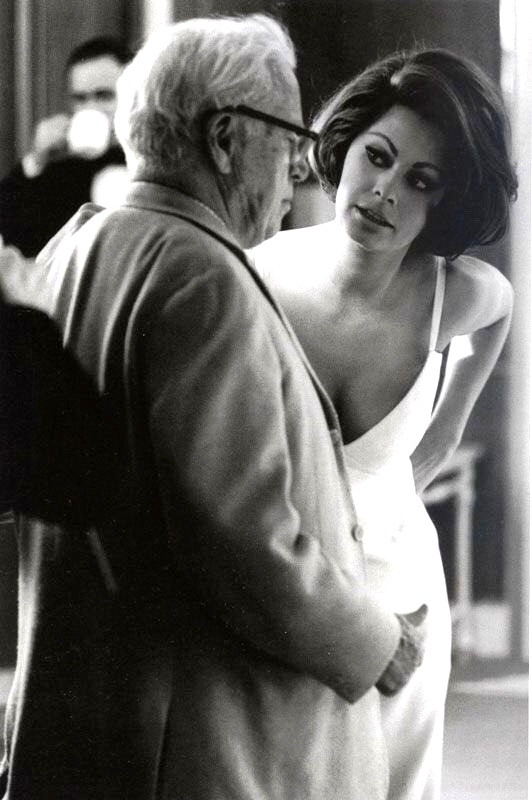
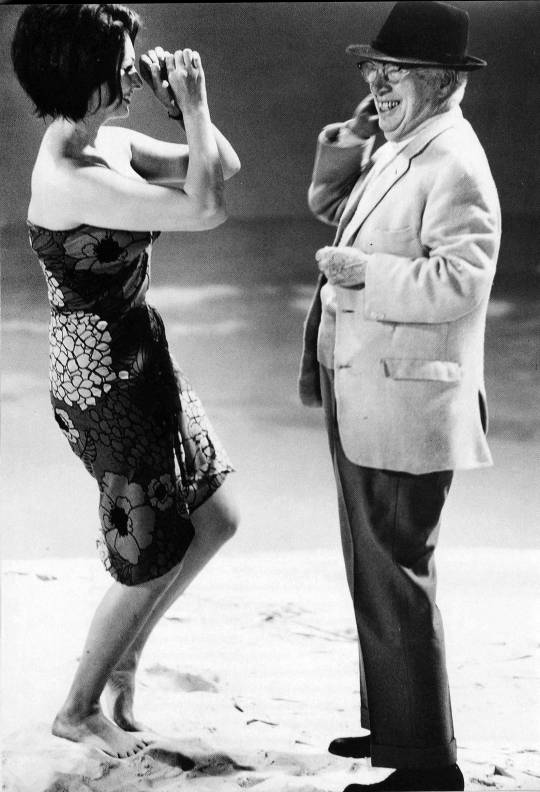
Happy 89th birthday to the always stunning Sophia Loren - September 20th 1934.
Photos of her and Charlie Chaplin before and during production of "A Countess of Hong Kong" (1967). The last Chaplin produced film of which he played a cameo role. To this day when she is asked about her time working for him has only had kind things to say.
In 1999 A.F.I. The American Film Institute in Los Angeles, selected the 50 greatest American Film Star Legends (out of 500 nominees) 25 women 25 men) - 'defined as actors or a team of actors with a significant screen presence in American feature-length films whose screen debut occurred in or before 1950, or whose screen debut occurred after 1950 but whose death marked a completed body of work).
Charlie Chaplin was #10 and Sophia Loren #21. At the time of polling there were 9 living legends, Sophia Loren is now the only living.
21 notes
·
View notes
Text
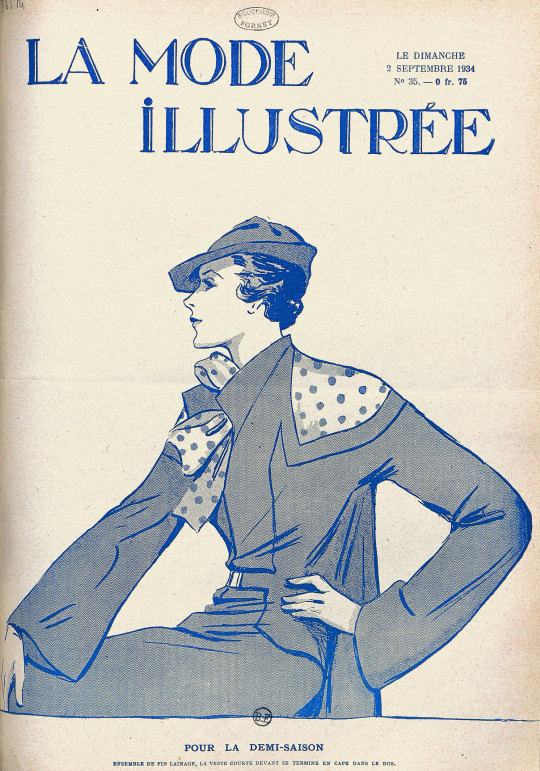
La Mode illustrée, no. 35, 2 septembre 1934, Paris. Pour la demi-saison. Ensemble de fin lainage, la veste courte devant se termine en cape dans le dos. Ville de Paris / Bibliothèque Forney
#La Mode illustrée#20th century#1930s#1934#on this day#September 2#periodical#fashion#fashion plate#cover#Forney#dress#cape#polka dots
16 notes
·
View notes
Text
Dates of Birth
Mainly for my OCs’ birthdays. But includes the canon ones, just for reference.
Brackets are for the Madrigals and bold are canon/confirmed birthdays. Italics are for the friends groups, as they don’t have individual tags, so you know where to find more about them.
(Alma - 1st January 1875)
(Pedro - 22nd June 1875)
(Félix - 11th November 1896)
Alfonso Hernandez - 15th July 1899
(Julieta, Pepa & Bruno - 17th October 1899)
(Agustín - 19th June 1902)
Lili Iglesias - 30th September 1927
(Isabela - 7th August 1928)
(Dolores - 31st August 1928)
Mariano Guzmán - 12th October 1928
Lucía Desoto, Green Group - 13th April 1929
Eugenia Augado, Gossipers - 9th September 1929
Marta Carrillo - 26th February 1930
Carmen Garza, Secret Friends Group - 8th April 1930
(Luisa - 14th November 1930)
Paula Zapatero, Secret Friends Group - 4th February 1931
Andres Medina-Lanzo, Secret Friends Group - 19th January 1931
Federico Rubio-Torres, Reptile Kids - 11th September 1933
Sandino & Olga Aldana, Reptile Kids - 27th July 1934
Marco Osma - 23rd November 1934
(Camilo - 28th December 1934)
Beatriz Basurto, Reptile Kids - 31st January 1935
(Mirabel - 6th March 1935)
Álvaro Escarra, AEMM - 31st March 1935
Sera Velasquez - 10th May 1935
Ruben Zapatero, Reptile Kids - 5th December 1935
Alejandra Bernal, Friendly Four - 6th February 1944
Cecilia Rubio-Torres, Friendly Four - 12th March 1944
Juancho Desoto, Friendly Four - 20th December 1944
(Antonio - 21st May 1945)
#encanto#encanto ocs#encanto: the green group#encanto: secret friends club#encanto: aemm#encanto: the gossipers#encanto: the reptile kids#encanto: friendly four#mariano guzmán#alfonso hernandez#lili iglesias#marco osma#sera velasquez#marta carrillo
8 notes
·
View notes
Text
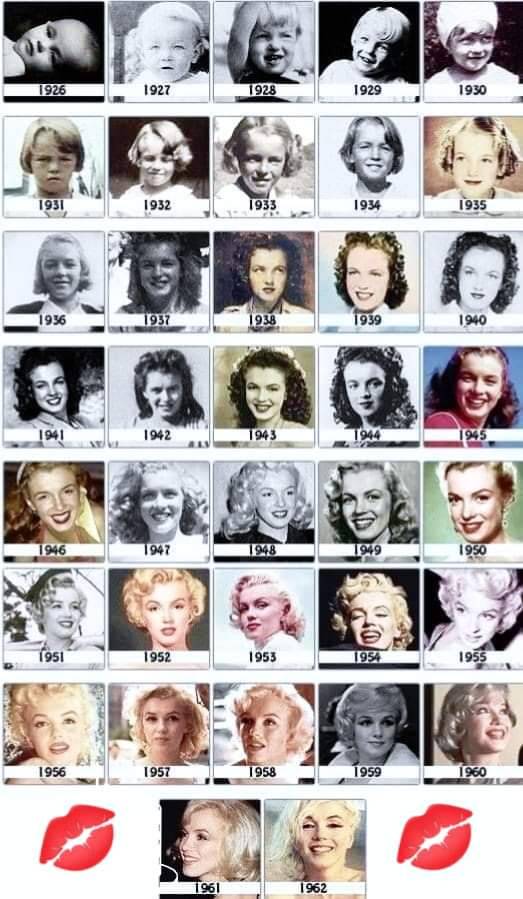
Norma Jeane to Marilyn Monroe 1926 - 1962. (Scroll down for 1926 - 1962)💋
1926
June 1: Birth at Los Angeles General Hospital.
June 13: Taken to live with the foster family, the Bolenders.
1933💋
Fall: Mother Gladys Baker takes Norma Jeane to live with her.
1934💋
February: Gladys Baker taken to an institution.
1935💋
June 1: Grace McKee becomes legal guardian.
September 13: Norma Jeane is left at the orphanage.
1937💋
June 26: Grace McKee takes her away from the orphanage.
1938💋
November: Goes to live with 'Aunt' Ana Lower.
1942💋
June 19: Marries James E. Dougherty.
1944💋
April: Norma Jeane starts work at the Radio Plane Munitions Factory.
1946💋
April: First National Magazine cover, in 'Family Circle'.
June 26: Photographed by David Conover for 'Yank' magazine.
July 19: First Screen-Test, for 20th Century Fox.
July 23: First Six Months studio contract, renewed in January.
July 29: First mention in a Hollywood gossip Column (Hedda Hopper).
August 2: Norma Jeane Dougherty applies to join the 'Blue Book Modeling Agency'.
September 13: Divorce granted from James E. Dougherty.
1947💋
August 25: Fox Contract not renewed for a second time.
1948💋
February: Marilyn befriends mogul Joseph M. Schenck.
March 9: Contract with Columbia Pictures.
September 8: Dropped by Columbia.
December 31: Meets agent Johnny Hyde, who indicates himself to promote her.
1949💋
May 27: Poses for photographer Tom Kelley - the nude Calendar shots.
July 24: First interview with Earl Wilson.
August 15: Starts shooting 'A Ticket To Tomahawk'.
October: Sings contract with MGM for the breakthrough role in 'The Asphalt Jungle'.
1950💋
January 5: Starts shooting 'The Fireball'.
April: Lands small but perfectly formed part in 'All About Eve'.
December 18: Johnny Hyde dies.
1951💋
March 29: Presents an Oscar at the Academy Awards ceremony.
April 18: Shooting starts on 'Love Nest'.
May 11: Latest six months contract and Fox converted to seven-year deal.
September 8: First full length national magazine feature in 'Colliers'.
1952💋
March: Marilyn and Joe DiMaggio go out on a first date.
March 13: Nude calendar story broken to public.
April 7: First 'Life' cover snapped by Phillipe Halsman.
June 1: On her birthday leans she is to be Lorelei Lee in 'Gentlemen Prefer Blondes'.
August 31: Live radio debut.
September 2: Grand marshal at the Miss America pageant.
1953💋
January, 21: She becomes a star when 'Niagara' is released.
January, 26: Marilyn and Jane Russell put their hand and feet prints in wet cement. At Graumann's Chinese Theater.
September, 13: TV debut at the 'Jack Benny Show'.
November, 4: Premier of 'How To Marry a Millionaire'.
December 15: Doesn't appear for shooting of 'The Girl in Pink Tights'.
1954💋
January, 4: Suspended by Fox.
January, 14: Marriage with Joe Dimaggio in San Francisco.
February, 2: They arrive at Tokyo Airport.
February, 16: Marilyn gives 10 concert's for the American soldiers in Korea.
September, 15: The shooting for the blowing skirt scene, included in the movie 'The Seven Year Itch'.
October, 5: Marilyn divorces Joe DiMaggio.
November, 6: Hollywood party in honor of Marilyn.
1955💋
January, 7: Press conference for 'Marilyn Monroe Productions Inc.'.
January, 15: Marilyn moves to the East coast, she is also suspended by Fox.
February: She met Lee Strasberg, and joins 'The Actor Studio'.
March, 31: She appears on a pink elephant on a benefit evening in 'Madison Square Garden'.
April, 8: Live in TV program of 'Person2Person' with Edward R. Murrow.
June, 1: Premier of 'The Seven Year Itch'.
1956💋
January, 4: A new contract between Fox and MM Productions.
February, 9: Marilyn and Sir Laurence Olivier announce that they will work together in 'The Sleeping Prince'.
June, 29: She marries Arthur Miller.
July, 14: She travels to London to begin with the shooting of 'The Prince And The Showgirl'.
August: Her first miscarriage.
October, 29: She meets Queen Elizabeth.
1957💋
June, 13: Premier of 'TPATS'.
August, 1: Another miscarriage.
1958💋
August, 4: The shooting of 'Some Like It Hot' begins, until November.
December, 17: Another miscarriage.
1959💋
March, 29: Premier of 'Some Like It Hot'.
1960💋
March, 8: Golden Globe award for 'Best Actress in a Comedy', in 'Some Like It Hot'.
June, 18: The shooting of 'The Misfits' begins.
August, 26: Marilyn is admitted in the hospital, some say in was a suicide attempt.
November, 11: Marilyn announce she divorces Arthur Miller.
November, 16: Clark Gable (who worked with in 'The Misfits') died of an heart attack.
1961💋
January, 20: Divorce of Arthur Miller.
January, 31: Premier 'The Misfits'.
February, 7: She is admitted to the 'Payne Whitney Clinic' in New York.
February, 11: She is admitted to 'Columbia Presbyterian Medical Center'.
October: Meets Robert Kennedy.
November: Meets John. F. Kennedy.
1962💋
February: Moves back to Los Angeles, in Brentwood.
March, 5: She get's a Gold Globe Award for 'World Film Favorite'.
April, 23: Shooting begins for 'Something's Got To Give'.
May, 19: Sings 'Happy Birthday' to JFK in 'Madison Square Garden'.
June, 1: Last workday at Fox.
June, 7: fired by Fox.
June, 23: Rehired by Fox.
July, 20: Admitted to the 'Cedars of Lebanon Hospital'.
August, 3: She appears on the cover of 'Life'.
August, 4: The last day Marilyn Monroe was alive.
August, 5: Marilyn Monroe is found dead in bed, autopsy reveals suicide. (possible)
August, 8: Funeral in 'Westwood Memorial Park Cemetery' 🙏💐🌸⚘️💐🌸⚘️
14 notes
·
View notes
Text
[my better half sent me the canon timeline because I'm an old man who can't Google]
1914,
Jack Worthing is born.
8th of August 1934,
Margaret Worthing is born.
12th August, 1934,
Arthur Ernest Hastings is born.
1st September, 1939,
Germany invades Poland, sparking World War II. This prompts the United Kingdom and France to declare war on Germany.
1943,
Germany launches a second full-scale invasion and is successful, forcing Great Britain to surrender. The German occupation of Great Britain begins, and the Executive Committee is formed.
7th May, 1947,
General Robert Byng announces plans for the Authority Project to the public.
20th July, 1947,
Victoria Byng conducts orientation for the children registered for the Authority.
Tommy Cranmer, and Mr. and Mrs. Lashford attempted to burn the registry so that Germany couldn't take any children, the traitors are hanged on the the arch near Barrow Holm.
21st July, 1947,
Mrs Boyle poisons her family with foxglove (excluding Sally), in order to prevent Elizabeth and Anne Boyle from being taken away by the Authority.
22nd July, 1947,
Margaret Worthing is shot by the Germans for trying to escape the Authority. The rest of the children are sent to Germany as part of the Authority, and Sally moves in with the Hastings.
10th August, 1949,
The Soviet Union and the United States take Berlin. The German occupation of Great Britain ends.
1953,
Haworth's creation; Joy, clears trials and enters mass production. Mass production of Joy begins at Haworth Labs for the citizens of Wellington Wells.
4 notes
·
View notes
Photo
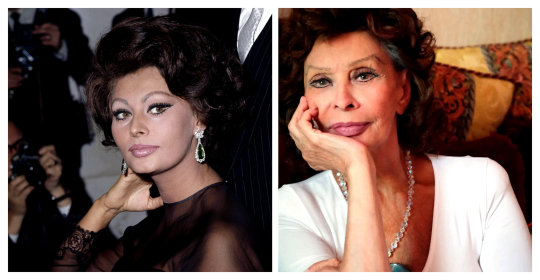
Sophia Loren born on September 20th in 1934 and still looking good at age 88.
7 notes
·
View notes
Text
POPPY
1923
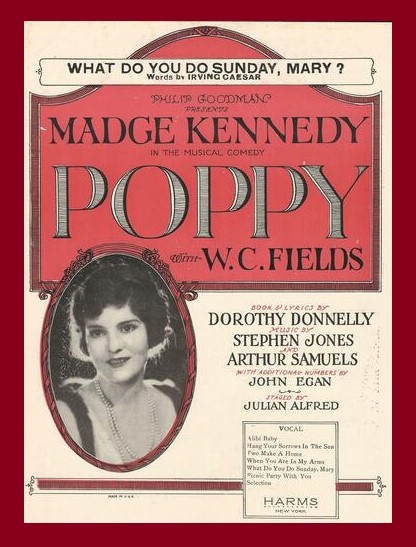
Poppy is a musical in three acts by Dorothy Donnelly with music by Stephen Jones and Arthur Samuels with musical contributions by John Egan. It was produced by Philip Goodman and staged by Donnelly and Julian Alfred, starring Madge Kennedy as Poppy McGargle and featuring W.C. Fields as her adopted father, Professor McGargle.
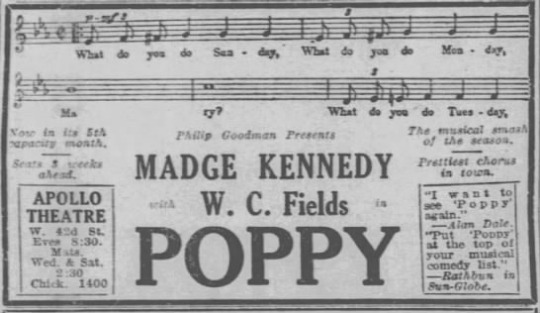
The musical introduced songs such as "Two Make a Home", "On Our Honeymoon", "What Do You Do Sunday, Mary?" and "Alibi Baby".
The musical takes place in Greenmeadow, Connecticut in 1874. Professor Eustice McGargle, a juggler and hustler who runs a traveling circus, adopts an orphan, Poppy. He teaches her to be a con artist. When the circus passes through a small town, Poppy meets a wealthy local boy, William. McGargle learns that Princess Vronski Mameluke Pasha Tubbs has a long-lost daughter, and he tries to pass Poppy off as the heiress. In the end she turns out to be the true heir and marries William.
"What a gorgeous day! What effulgent sunshine! Effulgent sunshine, yes. 'Twas a day of this sort, the McGillicuddy brothers murdered their mother with an axe!" ~ W.C. FIELDS as PROFESSOR MCGARGLE

One of W.C. Fields’s first paying jobs as an entertainer was in 1893 when he worked as a juggler at Fortescue’s Pier in Atlantic City. When business was slow, Fields would pretend to be drowning in the ocean and had to be fake rescued. His bosses believed that his near-drowning and dramatic rescue would draw a crowd of customers.
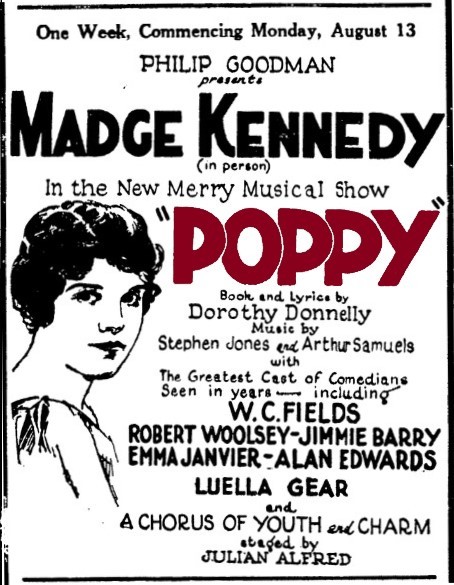
Poppy opened in Atlantic City at Nixon’s Apollo Theatre on August 13, 1923. The week of August 20th, Poppy played a split week in Long Branch and Asbury Park. Just prior to Broadway, it played a week in Newark NJ.
“Our idea of a way to waste what we consider the most charming farceur on the American stage is to cast Miss Madge Kennedy in musical comedy. "Poppy" by any other name at the Main Street would be Just as soporific, so far as Miss Kennedy is concerned.” ~ ASBURY PARK PRESS
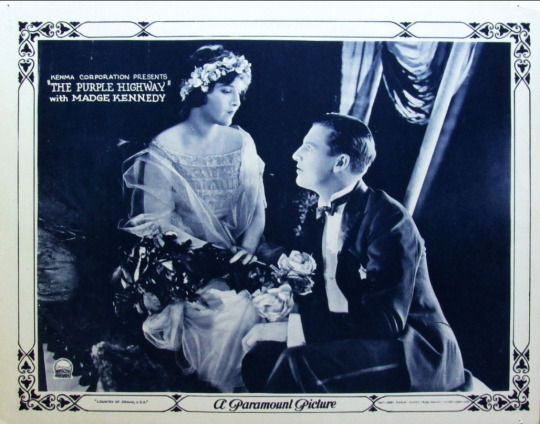
While performing in Poppy, Madge Kennedy was also seen on cinema screens in The Purple Highway. The film was based on a 1921 play, although Kennedy did not star in it on Broadway.

Poppy opened on Broadway at the Apollo Theatre (223 West 42nd Street) on September 3, 1923.
About the Venue: Built in 1910 as the Bryant as 42nd Street's first motion picture and vaudeville house. In 1920, the Selwyn brothers rebuilt it as a legit house, the Apollo. From November 1934 to 1937, burlesque was produced, until the Brandt chain took over. By 1938, it was a popular art and foreign movie house. 1979 to 1983 marked a brief return to legit theatre as the ‘New’ Apollo. Later, it held rock concerts. Architectural elements from the building were incorporated into the Ford Center in 1998.
"’Poppy’ is clean and refreshing by comparison with much of the degenerate stuff which nowadays passes for legitimate amusement in our lighter musical shows.” ~ METCALFE, WALL STREET JOURNAL

“Madge Kennedy Is the Babe Ruth of the stage, after a manner of speaking.” ~ JAMES W. DEAN


During Thanksgiving week, Sunday NY Daily News columnist Sally Joy Brown ran a contest for young people to win tickets to see Poppy, including a backstage visit with Madge Kennedy.

The event was so successful, Brown ran a second contest.
During the run of the play, Kennedy mentored drama students at Columbia University. They had voted her their favorite actress on Broadway.
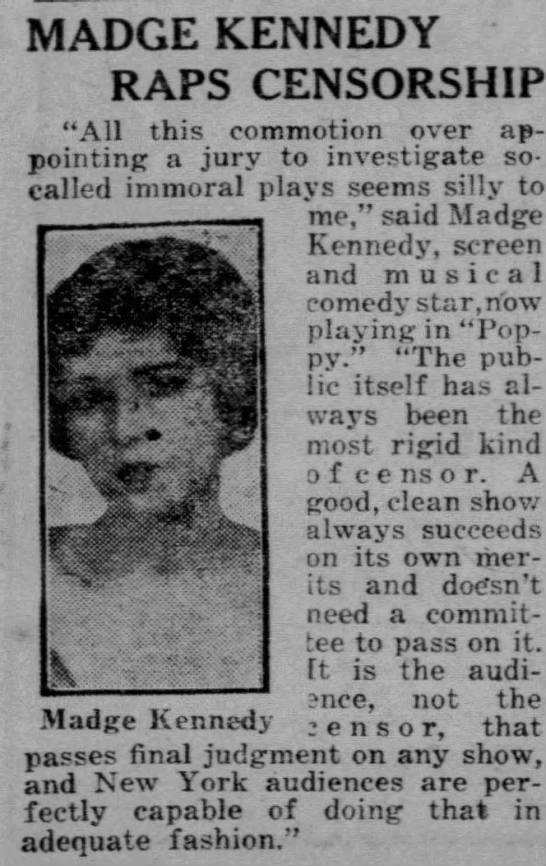
The controversy had caused David Belasco to re-write and re-stage several of his plays to address the NY Attorney General’s concerns.
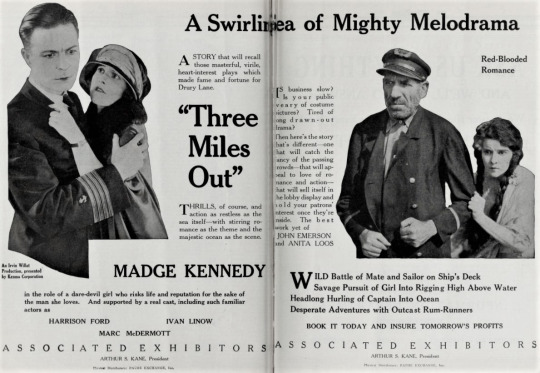
At the end of 1923, yet another Madge Kennedy film opened: Three Miles Out.

On May 31st, Kennedy played her final performance as Poppy. The title role was assumed by chorus member Victoria White.

With Kennedy’s departure, Fields was elevated to star status, billed above the title. Telegrams of congratulation to Mr. Fields were read from the stage of the Apollo theatre by Will Rogers, who abandoned his "Follies" rehearsals across the street to act as master of ceremonies. With characteristically witty comments, Mr. Rogers read congratulatory messages from Fred Stone, Eddie Cantor. Leon Erroll, Harold Lloyd, Al Jolson, Walter Catlett, Oscar Shaw, Raymond Hitchcock, Buster Keaton, Lee Shubert, Jerome Kern, and several others. Mr. Fields was greeted with a storm of applause when he stepped forward to acknowledge the felicitations.
Poppy ran 346 performances closing on June 28, 1924. The New York run was followed by a touring production.
In 1924 there was a London production of Poppy at the Gaiety Theatre.

There were two film version, both of which starred Fields as Eustice P. McGargle. The first was Sally of the Sawdust (1925), a silent movie directed by D.W. Griffith and co-starring Carol Dempster as Sally. Griffith had good reason not to use the name or title "Poppy" for this movie. A movie titled Poppy with a character by that name had come out in 1917.

Atlantic City audiences saw Sally on September 7, 1925 at the Strand Theatre on the Boardwalk.

The second was Poppy (1936), directed by A. Edward Sutherland. Fields was ill during the 1936 production, and a fairly obvious double was used in several scenes requiring physical exertion.

The film opened in Atlantic City at the Warner Theatre on the Boardwalk on June 21, 1936. The Warner (later re-named the Warren) was just seven blocks away from Nixon’s Apollo, where the play began in 1923.
"And if we should ever separate, my little plum, I want to give you just one bit of fatherly advice: 'Never give a sucker an even break!'" ~ W.C. FIELDS as PROFESSOR MCGARGLE.
#Madge Kennedy#W.C. Fields#Atlantic City#Nixon's Apollo Theatre#Apollo Theatre#Broadway Musical#Musical#Dorothy Donnelly#1923#Sally of the Sawdust#Poppy#Theatre#Stage
2 notes
·
View notes
Text
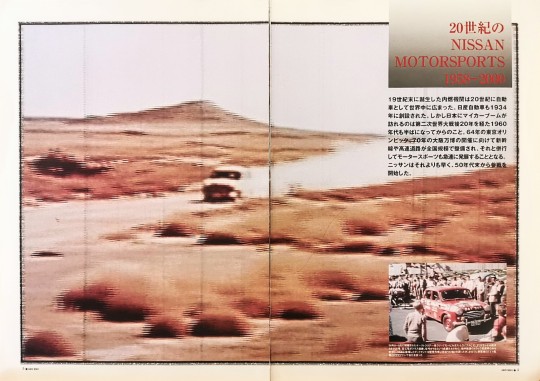
20th century NISSAN MOTORSPORTS
1958-2000
The internal combustion engine, which was created at the end of the 19th century, spread throughout the world in the form of automobiles in the 20th century. Nissan Motors was also founded in 1934. However, the private car boom did not arrive in Japan until the mid-1960s, 20 years after World War II. In preparation for the 1964 Tokyo Olympics and the 1970 Osaka Expo, Shinkansen trains and expressways were being built across the country, and motor sports developed rapidly at the same time.
Nissan began participating in the war earlier, in the late 1950s.
PIC CAPTION
Two Datsun 210s participated in the ``Mobilgas Trial,'' a round-the-Australian rally held in August and September 1958, with the Fuji taking first place in its class and the Sakura taking fourth place. The Datsun 110 passenger car, introduced in 1955 after a shift away from focusing on truck production during and after the war, boasted a strong suspension system, but the 210 was strengthened with a newly developed 1L 4-cylinder OHV engine.
0 notes
Text
Top 20 of the greatest chess players of all time:
1. **Garry Kasparov (1963-)**: Considered one of the greatest players, he held the World Chess Championship title from 1985 to 2000.
2. **Magnus Carlsen (1990-)**: Current World Chess Champion (as of my last update in September 2021) and one of the strongest players in history.
3. **Bobby Fischer (1943-2008)**: World Chess Champion from 1972 to 1975; renowned for his match against Boris Spassky during the Cold War era.
4. **Anatoly Karpov (1951-)**: Held the World Chess Championship title from 1975 to 1985 and was a dominant force in chess during his time.
5. **Emanuel Lasker (1868-1941)**: World Chess Champion from 1894 to 1921, he had the longest reign of any official World Chess Champion.
6. **Mikhail Tal (1936-1992)**: Known for his aggressive and imaginative style of play; World Chess Champion from 1960 to 1961.
7. **Jose Capablanca (1888-1942)**: World Chess Champion from 1921 to 1927; renowned for his exceptional endgame skill.
8. **Vladimir Kramnik (1975-)**: World Chess Champion from 2000 to 2007; known for his deep understanding of chess positions.
9. **Viswanathan Anand (1969-)**: World Chess Champion from 2007 to 2013; India's first grandmaster and a chess legend.
10. **Mikhail Botvinnik (1911-1995)**: World Chess Champion for several non-consecutive terms between 1948 and 1963.
11. **Tigran Petrosian (1929-1984)**: World Chess Champion from 1963 to 1969; known for his defensive and strategic prowess.
12. **Boris Spassky (1937-)**: World Chess Champion from 1969 to 1972; faced Bobby Fischer in the famous 1972 World Championship match.
13. **Akiba Rubinstein (1882-1961)**: An outstanding player from the early 20th century, known for his endgame skill and openings.
14. **Paul Morphy (1837-1884)**: A chess prodigy of the 19th century; his games are still studied and admired today.
15. **Viktor Korchnoi (1931-2016)**: A strong contender for the World Chess Championship in the 1970s and 1980s; known for his resilience.
16. **Siegbert Tarrasch (1862-1934)**: One of the strongest players of his time; made significant contributions to chess theory.
17. **Max Euwe (1901-1981)**: World Chess Champion from 1935 to 1937; also a respected mathematician and chess administrator.
18. **Boris Gelfand (1968-)**: A top-level player for several decades, he contested the World Chess Championship in 2012.
19. **Rashid Nezhmetdinov (1912-1974)**: A highly creative player known for his brilliant combinations and sacrifices.
20. **Vassily Ivanchuk (1969-)**: Considered one of the most versatile and imaginative players in modern chess.
Please note that the information provided here is brief and there is much more to learn about each of these players if you are interested in their specific games, strategies, and contributions to chess theory.

0 notes
Text
Shostakovich 24 Preludes Op. 87 No. VIII (Noten, sheet music)
Shostakovich 24 Preludes Op. 87 No. VIII (Noten, sheet music)
https://vimeo.com/785048896
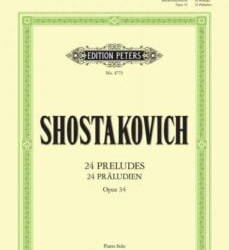
Shostakovich
Biography
Dmitri Dmitrievich Shostakovich (Russian: Дми́трий Дми́триевич Шостако́вич) (Saint Petersburg, September 25, 1906 – August 9, 1975) was a Russian composer who lived during the Soviet period. He had difficult relations with the Communist Party of the USSR (CPSU), which publicly denounced his music in 1936 and 1948.
Publicly, however, he was loyal to the Soviet regime, accepting a CPSU card in 1960 and becoming a member. of the Supreme Soviet of the USSR. His attitude toward the communist regime and the Soviet state has been the subject of bitter political and musical controversies, and it has been hotly debated whether Shostakovich was a clandestine dissident against the regime.
After an initial period of musical avant-garde, Shostakovich's style drifted towards a late musical romanticism in which the influence of Mahler is combined with that of the Russian musical tradition, with Mussorgsky and Stravinsky as important references.
Shostakovich integrated all these influences, creating a very personal style that even evolved towards atonality in some works. Shostakovich's music often includes sharp contrasts and grotesque elements, with a prominent rhythmic component. In his work, his cycles of fifteen symphonies and fifteen string quartets stand out; Furthermore, he composed a lot of chamber music, several operas, six concertos and film music.
Today Shostakovich is considered by many critics to be the most outstanding composer of the 20th century.
- His early years:
Born in Saint Petersburg, Russia, Shostakovich was a child prodigy as a pianist and as a composer. From an intellectual family in which political influences were not lacking, in his teenage years he witnessed the 1917 revolutions and wrote some commemorative works for the victims of the revolution.
In 1922, he was admitted to the Petrograd Conservatory, where he was taught by Alexander Glazunov. There he suffered the consequences of his lack of interest in politics, and in 1926 he failed his test on Marxist methodology. The first musical work to achieve international fame was composed at the age of 19: Symphony No. 1 in F minor, Op. 10 (1925), which he presented as a graduation work and which would win first prize for composition.
When the work was premiered by the Leningrad Philharmonic Orchestra on May 12 of the following year, jubilation seized the artistic circles of the young Soviet Republic. The success of the symphony in Europe and America corroborated the relief of a new talent and, what was even more decisive, of the first great composer of the "new Russia".
Upon graduation, he embarked on a dual career as a composer and pianist, but his cold playing style was not widely appreciated. He would soon limit his performances basically to those in which he presented his own works. In 1927 he composed his second symphony (called Dedication to October).
While composing this symphony, he began writing his satirical opera The Nose, based on a short story by Nikolai Gogol. In 1929, his opera was branded “formalist” by the Russian Association of Proletarian Musicians, one of the musicians' associations in the USSR.
In 1927 he also began his relationship with Iván Sollertinsky, who would be his best friend until his death in 1944. Sollertinsky introduced Shostakovich to the work of Gustav Mahler, who was to have a great influence on his music starting with his Fourth Symphony.
Towards the end of the 1920s Shostakovich collaborated with the TRAM, a proletarian youth theater in Leningrad.
Although he developed little activity, the position protected him from ideological attacks. During this time he devoted himself intensely to composing his opera Lady Macbeth of Mtsensk, which premiered in 1934 and was immediately successful, although it was later banned in his country for twenty-six years.
In 1932, he married his first wife, Nina Varzar. Although early difficulties led to their divorce in 1935, the couple reconciled shortly thereafter.
- First complaint:
In 1936 Shostakovich's bliss ended when Pravda published a series of attacks on his music. In a famous article entitled Chaos Instead of Music, which has been attributed to Stalin, Lady Macbeth was condemned in drastic terms, accusing her of anti-popular snobbery, pornophony and formalism.
The performances of the opera, which were taking place simultaneously in several theaters, were suspended and the composer saw his income and his prestige plummet, in a context in which political repression was wreaking havoc. It was the time of the great purges, in which friends and acquaintances of the composer were sent to prison or executed. The only consolation for him in this period was the birth of his daughter Galina in 1936; His son Maxim was born two years later.
After some rehearsals in December 1936, Shostakovich withdrew his Fourth Symphony, without actually premiering it, probably for fear of the reaction it might provoke. The symphony, one of Shostakovich's most tragic, could have fallen like a bomb in the climate of terror that the Soviet authorities sought to cover up with bright and optimistic works of art. Requiring a huge orchestra, the work was not premiered until 1961 and sadly remains to this day one of Shostakovich's lesser-known symphonies.
His Fifth Symphony, premiered in 1937, is musically conservative. In it the tragic emotion of the slow movements is combined with an electrifying dynamism. The final apotheosis of the work has been interpreted as optimistic by some, as a mockery of a forced joy by others.
Fortunately for Shostakovich, the regime understood the former and praised the play, which was a great success in his country. Although it received appalling reviews in the West, Symphony No. 5 remains one of the most popular symphonies of the 20th century. It was at this time that Shostakovich began writing string quartets. His chamber work allowed him to experiment and express ideas that would have been unacceptable in his more popular symphonic pieces.
In September 1937, he began teaching composition at the conservatory, which brought him some financial stability but also interfered with his own creative work.
- The war:
When Germany attacked Russia in 1941, Shostakovich initially remained in Leningrad during the siege and began his Seventh Symphony, known precisely as Leningrad. In October 1941, the composer and his family were evacuated to Kuybyshev (now Samara), where he finished his work, which was adopted as a symbol of Russian resistance both in the USSR and in the West.
In the spring of 1943 the whole family moved to Moscow. From that time is the Eighth Symphony, an extensive and obscure work that was not approved by the authorities. The work was rarely interpreted, despite its exceptional quality in the opinion of much of today's critics.
From the Ninth Symphony (1945) the authorities expected music appropriate to the historical resonances of the symphonic number 9 and the victorious march of the war against Germany.
Those expectations were frustrated by the composer with a strange symphony, with allusions to Rossini and moments that seem pure circus music. In 1948 Shostakovich and other composers were convicted of Zhdanovian formalism, their compositions were banned, and the privileges enjoyed by the composer's family were withdrawn. Only in 1958, after Stalin's death, did the CPSU find the criticism unfair and lift the bans on the compositions condemned in the 1948 resolutions.
- The last years of Stalin and the thaw:
In the years following his 1948 conviction, Shostakovich composed official papers to secure his official vindication, while also working on serious "desk drawer" work. Among these were the Violin Concerto No. 1 in A minor, dedicated to David Óistrakh and which would not be released until seven years after it was written, and the song cycle From Jewish popular poetry (Op. 79), a work that has caused controversy. for its undoubted political connotations.
Some have seen in this song cycle a heroic act of critical affirmation against Russian anti-Semitism, then promoted by the Soviet authorities. Laurel Fay says instead that Shostakovich was trying to conform to official policy by taking popular song as his inspirational theme. The last three songs of the cycle, in which the situation of the Jews "in the new Russia" is glorified, seem to abound in Fay's interpretation.
The restrictions placed on Shostakovich's music and his living conditions improved in 1949, when Shostakovich was sent with a delegation of Soviet personalities to the United States. That same year, he wrote his cantata Song of the Woods, which praised Stalin as the "Great Gardener." In 1951 the composer became a deputy of the Supreme Soviet.
Stalin's death in 1953 was followed by the Tenth Symphony, one of his most popular compositions, often described as an optimistic tragedy. The symphony contains the famous "Shostakovich theme", which derives from the initials of the composer's first and last name, transliterated into German, that is, "D. Sch.".
In German music notation, the series D–Es–C–H represents the sounds D natural, E flat, C natural, B natural. In the third movement of his Tenth Symphony, Shostakovich uses that DSCH motif together with another representing the name "Elmira", in homage to his student Elmira Nazirova. Centuries before, Johann Sebastian Bach had used the same resource with the letters B–A–C–H which, also in German notation, represent the sounds B flat, A natural, C natural, B natural.
During the forties and fifties, Shostakóvich had a very close relationship with two of his students: Galina Ustvólskaya and the aforementioned Elmira Nazirova. Ustvolskaya was a student of the composer from 1937 to 1947.
The nature of their relationship is unclear: while Rostropovich describes her as "tender," Ustvolskaya said in a 1995 interview that she had declined a marriage proposal from him in the 1950s. The relationship with Nazirova seems to have been one-sided, according to the letters he wrote to her, and can be dated between 1953 and 1956. In the background was Shostakovich's open marriage to Nina Varzar, who died in 1954. Shostakovich married his second wife Margarita Kainova in 1956; three years later they divorced.
The Eleventh Symphony of 1956-1957 is titled 1905 in explicit reference to the revolutionary events that occurred that year in Russia Russian Revolution of 1905. Some have also wanted to see in this work a reference to the Hungarian Revolution.
- Shostakovich connection to the party:
The year 1960 marked another turning point in Shostakovich's life: he joined the Communist Party. This event has been interpreted as a show of compromise or cowardice, or as a result of pressure.
In this period he was also affected by poliomyelitis that he began to suffer in 1958.
Shostakovich's musical response to these personal crises was his Eighth String Quartet, which like his Tenth Symphony incorporates various codes and quotations.
In 1962, the composer married for the third time. The bride, Irina Supinskaya, was only 27 years old. That same year Shostakovich returned to the theme of anti-Semitism in his Symphony No. 13, Babi Yar.
The symphony is a choral work based on poems by Yevgeny Evtushenko, the first of which commemorates a massacre of Jews during World War II. There are conflicting opinions regarding the risk assumed by the composer when premiering this work. Evtushenko's poem had been published and had not been censored, although it was controversial. After the symphony's premiere, Evtushenko was pressured to add a stanza to his poem saying that Russians and Ukrainians had died alongside the Jews at Babi Yar.
Shostakovich last years:
In the last years of his life, Shostakovich suffered from a chronic illness: his meliitis continued to worsen, and he began to suffer from heart problems in the mid-1960s. Most of his later work—his Fourteenth and Fifteenth Symphonies, and later quartets—are dark and introspective. They attracted much favorable criticism from the West, as they did not have the performance problems that his earlier works, which were more public pieces, had.
Shostakovich, who had been a heavy smoker, died of lung cancer on August 9, 1975. He was buried in the Novodevichy Cemetery in Moscow, Russia. His son, the pianist and conductor Maxim Shostakovich, was the dedicatee and first performer of several of his works.
* His work:
Among his best-known works are the Fifth and Tenth symphonies, and the Eighth and Fifteenth quartets. His music shows the influence of several of the composers he most admired: Johann Sebastian Bach in his fugues and his passacaglias; Beethoven in his last quartets; Gustav Mahler in his and Berg's symphonies in the use of musical codes and quotations.
His works are largely tonal in the Romantic tradition, but with elements of atonality, polytonality, and chromaticism. In some of his later works (for example the Twelfth Quartet) he used twelve-tone series. Many commentators have noted a differentiation between his work before the 1936 criticism and the more conservative subsequent work.
Volkov commented that Shostakovich took on the role of the yurodivy, or enlightened one. The yurodivy plays an important role in Mussorgsky's opera Boris Godunov, which Shostakovich admired and for which he produced a new orchestration.
- Shostakovich character:
Shostakovich was in many ways an obsessive man: according to his daughter, he was “obsessed with cleanliness” (Árdov p. 139); he synchronized the clocks in his apartment; he regularly sent letters to himself to test how well the postal service was doing.
In Wilson's book Shostakovich: A Life Remembered, 26 references to his nervousness are listed. Yuri Lyubimov comments that "the fact that he was more vulnerable and receptive than other people was undoubtedly an important component of his genius" (Wilson p. 183). In the last years of his life, Krzysztof Meyer recalled, "his face was a bag of tics and gestures" (Wilson p. 462).
When he was in a good mood, sport was one of his main distractions, although he preferred to stay as a spectator or referee to participate (he was a qualified soccer referee). He also liked card games, particularly solitaire, and chess.
Both dark and light sides of his personality were made evident by his fondness for satirical writers such as Gogol, Chekhov, and Mikhail Zoshchenko (Wilson p. 41). The influence of the former can be seen in his letters, in which he makes perverse parodies of Soviet officials.
Shostakovich was shy by nature: Flora Litvinova said that he "was incapable of saying 'no' to anyone" (Wilson p. 162). This meant that he was easily persuaded to sign official statements, including a public denunciation of Andrei Sakharov in 1973.
- Orthodoxy and revisionism:
Shostakovich's response to official criticism is debatable. It is clear that he was apparently part of the State. He made speeches, or at least read them, and signed articles expressing the government's line of thought. It is also generally accepted that he disliked the regime, a view confirmed by his family, his letters to Isaak Glikman, and the satirical cantata "Rayok," which ridicules the anti-formalist campaign and was kept hidden even after death. of the.
What is uncertain is the extent to which Shostakovich was trying to show his opposition to the regime through his other music. The revisionist point of view was expounded by Solomon Volkov in the book Testimony of him in 1979, which Volkov presented as if they were Shostakovich's memoirs. The book argues that several of the composer's works have coded anti-government messages.
That Shostakovich incorporated quotes and allusions into his work is evident, as is his musical signature DSCH. His longtime collaborator, Yevgeny Mravinsky, said that "Shostakovich frequently explained his intentions with images and connotations" (Wilson p. 139). The revisionist perspective has been supported by the composer's children, Maxim and Galina, and by several Russian musicians. Widow Irina generally supports this thesis, but claims that Testimony is a forgery by Volkov.
A prominent revisionist was the late Ian MacDonald, an expert on The Beatles and Shostakovich. His book The New Shostakovich interprets Shostakovich's music in a conspiratorial key, almost every eighth note having a meaning. Anti-revisionists deny the authenticity of Testimony and allege that Volkov compiled various articles, gossip, and possibly some information obtained directly from the composer.
More generally, they argue that Shostakovich's significance lies more in his music than in his life, and that seeking political messages does not enhance but rather detract from the artistic value of the composer's music. Among the anti-revisionists stand out Laurel Fay and Richard Taruskin.
Read the full article
1 note
·
View note
Text
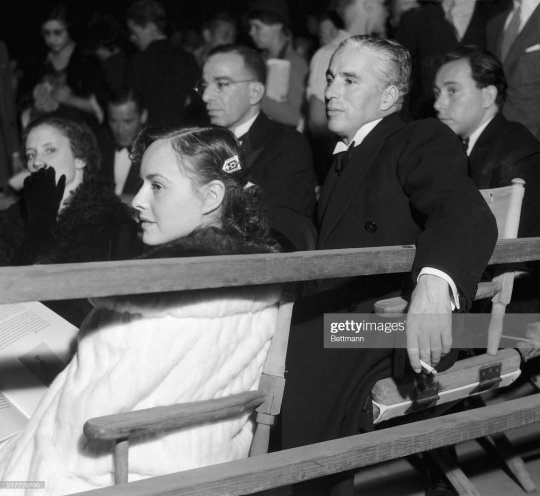
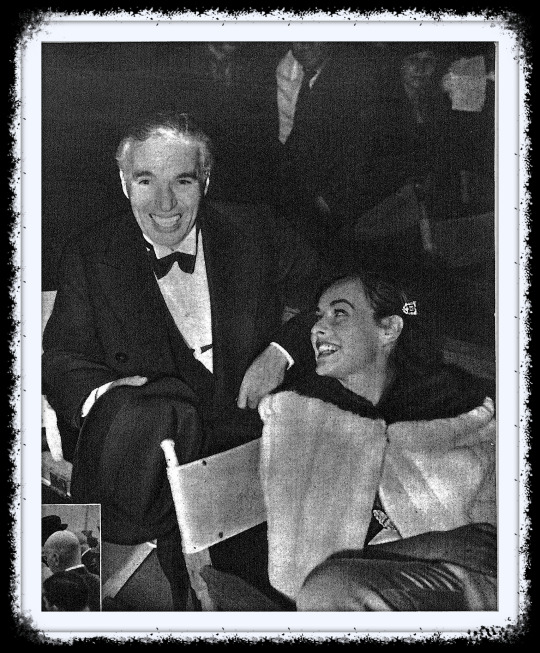
(Original Caption) Film Notables at Reinhardt Opening. Paulette Goddard and Charlie Chaplin pictured as they attended the premiere of Max Reinhardt’s production of Shakespeare’s "A Midsummer Night’s Dream" at the Hollywood Bowl, September 20th 1934.
13 notes
·
View notes
Photo

Delilah L. Beasley born on September 9, 1867, was a historian and newspaper columnist for the Oakland Tribune in Oakland, California. Beasley was the first Black woman to be published regularly in a major metropolitan newspaper. Beasley was also first to present written proof of the existence of California's black pioneers in her book Slavery in California (1918) and her classic, The Negro Trail-Blazers of California (1919). Her career in journalism spanned more than 50 years. She detailed the racial problems in California and the heroic achievements by Blacks to overcome them during the late 19th century and early 20th century. She began her newspaper career in 1883 writing for a black newspaper, the Cleveland Gazette,[7] founded by Harry C. Smith. Beasley, who never married, belonged to many civic organizations, including The Delilah L. Beasley Literary and Improvement Club, National Association for the Advancement of Colored People (NAACP), northern California branch founded in 1915, headquarters in Oakland. She was a member of the Alameda County League of Women Voters, the Public Welfare League of Alameda County, and the League of Nations Association of the California Federated Women's Club, which hosted the biennial convention in the Oakland Auditorium, attracting delegates from across the country. #DelilahBeasley died on August 18, 1934. She was laid to rest at Saint Mary Cemetery in Oakland. Twenty years later, a monument was erected, and a perpetual care endowed. Carved on the old tombstone is a simple epitaph: "Author and columnist, a native of Ohio and for 25 years a resident of Oakland.” Resource: wikipedia.org Oxford University Press Art: #ReedRMcCants ❤🖤💚🍫🍫🍫❤🖤💚 #blackgirlsrock #blackgurlmagic #MaybeItsMelanin #Superwoman #QueensGetTheMoney #Ebony #hairlove #blackexcellence #blackheritage ❤🖤💚🍫🍫🍫❤🖤💚 https://www.instagram.com/p/CiU5U03uh86/?igshid=NGJjMDIxMWI=
#delilahbeasley#reedrmccants#blackgirlsrock#blackgurlmagic#maybeitsmelanin#superwoman#queensgetthemoney#ebony#hairlove#blackexcellence#blackheritage
0 notes
Text
RENE FEUILLIE: COFFEE MILL ARTIST
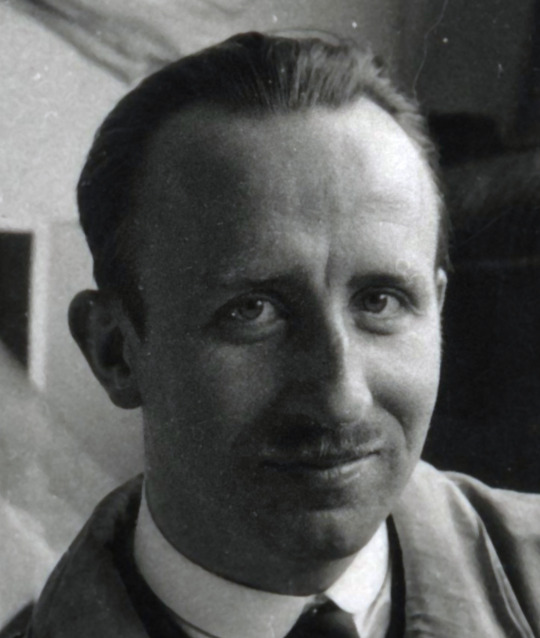
René Raymond Émile Feuillie
(Rouen, February 28, 1898 - Strasbourg, September 15, 1984) exercised all his life the profession of illustrator and "advertising designer", a profession which since the middle of the 20th century has become that of "graphic designer". He trained at the School of Decorative Arts in Paris.
As mentioned earlier, PEUGEOT did not manufacture hoppers in earthenware. The hoppers were made by industrial potteries (Sarreguemine, Digoin, Vitry-le-François, Obernai). Most sets were created directly by the potteries. For certain very specific series, artists were called. This is the case for the 'French Provinces' which were designed by René Feuillie. The drawings were made between 1934 and 1936 but the commercialization of these mills began in 1936 (until 1961).
René Feuillie was born in 1898 and died in 1984. He spent his entire life as an illustrator and "commercial artist". The designs for Peugeot mills is just one example of the variety of René Feuillie's work, which spanned illustrations, sketches, and paintings over the course of his long career. Examples of each form of his work can be seen below.
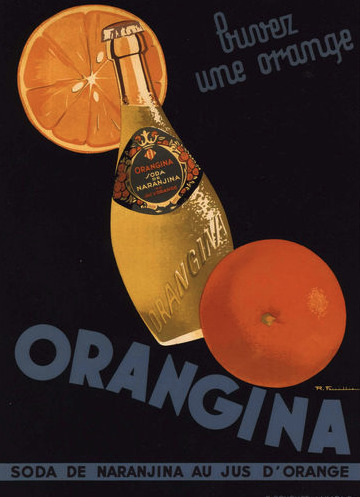
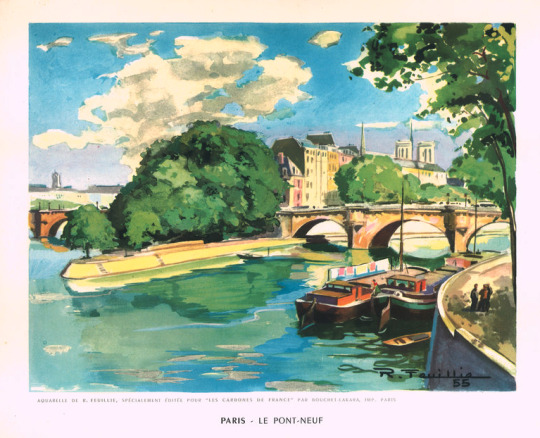
On December 15, 2009 at an auction by Gros et Delletrex in the l'Hôtel Drouot, Rene Feuillie sold 14 gouaches paintings prepared for a 1940 calendar for $5,000 euros. The auction listing can be found here. A sample of one of the paintings is seen below.
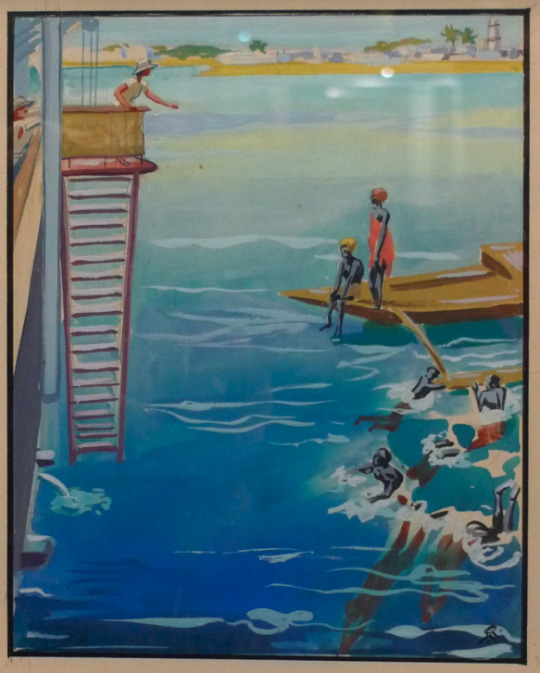
0 notes
Text
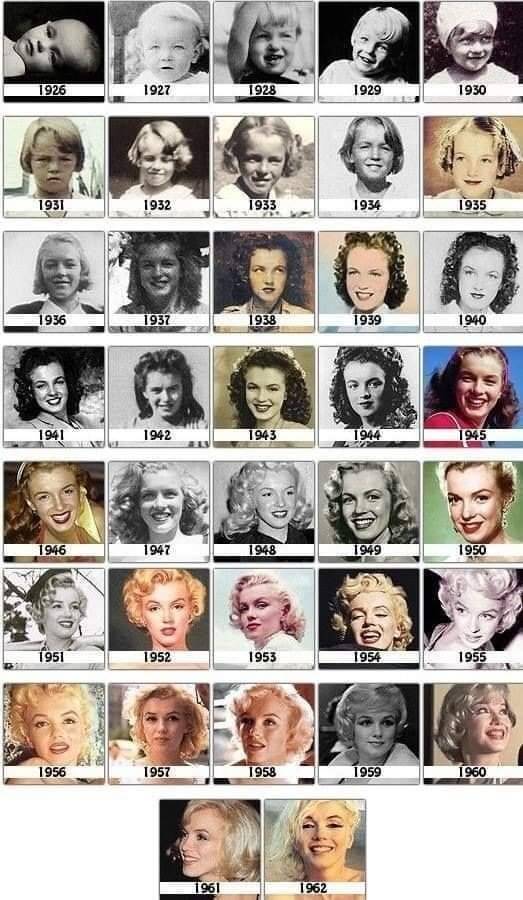
Norma Jeane to Marilyn Monroe 1926 - 1962 (Scroll down from 1926 - 1962)💋
1926
June 1: Birth at Los Angeles General Hospital.
June 13: Taken to live with the foster family, the Bolenders.
1933
Fall: Mother Gladys Baker takes Norma Jeane to live with her.
1934
February: Gladys Baker taken to an institution.
1935
June 1: Grace McKee becomes legal guardian.
September 13: Norma Jeane is left at the orphanage.
1937
June 26: Grace McKee takes her away from the orphanage.
1938
November: Goes to live with 'Aunt' Ana Lower.
1942
June 19: Marries James E. Dougherty.
1944
April: Norma Jeane starts work at the Radio Plane Munitions Factory.
1946
April: First National Magazine cover, in 'Family Circle'.
June 26: Photographed by David Conover for 'Yank' magazine.
July 19: First Screen-Test, for 20th Century Fox.
July 23: First Six Months studio contract, renewed in January.
July 29: First mention in a Hollywood gossip Column (Hedda Hopper).
August 2: Norma Jeane Dougherty applies to join the 'Blue Book Modeling Agency'.
September 13: Divorce granted from James E. Dougherty.
1947
August 25: Fox Contract not renewed for a second time.
1948
February: Marilyn befriends mogul Joseph M. Schenck.
March 9: Contract with Columbia Pictures.
September 8: Dropped by Columbia.
December 31: Meets agent Johnny Hyde, who indicates himself to promote her.
1949
May 27: Poses for photographer Tom Kelley - the nude Calendar shots.
July 24: First interview with Earl Wilson.
August 15: Starts shooting 'A Ticket To Tomahawk'.
October: Sings contract with MGM for the breakthrough role in 'The Asphalt Jungle'.
1950
January 5: Starts shooting 'The Fireball'.
April: Lands small but perfectly formed part in 'All About Eve'.
December 18: Johnny Hyde dies.
1951
March 29: Presents an Oscar at the Academy Awards ceremony.
April 18: Shooting starts on 'Love Nest'.
May 11: Latest six months contract and Fox converted to seven-year deal.
September 8: First full length national magazine feature in 'Colliers'.
1952
March: Marilyn and Joe DiMaggio go out on a first date.
March 13: Nude calendar story broken to public.
April 7: First 'Life' cover snapped by Phillipe Halsman.
June 1: On her birthday leans she is to be Lorelei Lee in 'Gentlemen Prefer Blondes'.
August 31: Live radio debut.
September 2: Grand marshal at the Miss America pageant.
1953
January, 21: She becomes a star when 'Niagara' is released.
January, 26: Marilyn and Jane Russell put their hand and feet prints in wet cement. At Graumann's Chinese Theater.
September, 13: TV debut at the 'Jack Benny Show'.
November, 4: Premier of 'How To Marry a Millionaire'.
December 15: Doesn't appear for shooting of 'The Girl in Pink Tights'.
1954
January, 4: Suspended by Fox.
January, 14: Marriage with Joe Dimaggio in San Francisco.
February, 2: They arrive at Tokyo Airport.
February, 16: Marilyn gives 10 concert's for the American soldiers in Korea.
September, 15: The shooting for the blowing skirt scene, included in the movie 'The Seven Year Itch'.
October, 5: Marilyn divorces Joe DiMaggio.
November, 6: Hollywood party in honor of Marilyn.
1955
January, 7: Press conference for 'Marilyn Monroe Productions Inc.'.
January, 15: Marilyn moves to the East coast, she is also suspended by Fox.
February: She met Lee Strasberg, and joins 'The Actor Studio'.
March, 31: She appears on a pink elephant on a benefit evening in 'Madison Square Garden'.
April, 8: Live in TV program of 'Person2Person' with Edward R. Murrow.
June, 1: Premier of 'The Seven Year Itch'.
1956
January, 4: A new contract between Fox and MM Productions.
February, 9: Marilyn and Sir Laurence Olivier announce that they will work together in 'The Sleeping Prince'.
June, 29: She marries Arthur Miller.
July, 14: She travels to London to begin with the shooting of 'The Prince And The Showgirl'.
August: Her first miscarriage.
October, 29: She meets Queen Elizabeth.
1957
June, 13: Premier of 'TPATS'.
August, 1: Another miscarriage.
1958
August, 4: The shooting of 'Some Like It Hot' begins, until November.
December, 17: Another miscarriage.
1959
March, 29: Premier of 'Some Like It Hot'.
1960
March, 8: Golden Globe award for 'Best Actress in a Comedy', in 'Some Like It Hot'.
June, 18: The shooting of 'The Misfits' begins.
August, 26: Marilyn is admitted in the hospital, some say in was a suicide attempt.
November, 11: Marilyn announce she divorces Arthur Miller.
November, 16: Clark Gable (who worked with in 'The Misfits') died of an heart attack.
1961
January, 20: Divorce of Arthur Miller.
January, 31: Premier 'The Misfits'.
February, 7: She is admitted to the 'Payne Whitney Clinic' in New York.
February, 11: She is admitted to 'Columbia Presbyterian Medical Center'.
October: Meets Robert Kennedy.
November: Meets John. F. Kennedy.
1962
February: Moves back to Los Angeles, in Brentwood.
March, 5: She get's a Gold Globe Award for 'World Film Favorite'.
April, 23: Shooting begins for 'Something's Got To Give'.
May, 19: Sings 'Happy Birthday' to JFK in 'Madison Square Garden'.
June, 1: Last workday at Fox.
June, 7: fired by Fox.
June, 23: Rehired by Fox.
July, 20: Admitted to the 'Cedars of Lebanon Hospital'.
August, 3: She appears on the cover of 'Life'.
August, 4: The last day Marilyn Monroe was alive.
August, 5: Marilyn Monroe is found dead in bed, autopsy reveals suicide. (possible)
August, 8: Funeral in 'Westwood Memorial Park Cemetery'
46 notes
·
View notes
Text
Events 7.2
437 – Emperor Valentinian III begins his reign over the Western Roman Empire. His mother Galla Placidia ends her regency, but continues to exercise political influence at the court in Rome.
626 – Li Shimin, the future Emperor Taizong of Tang, ambushes and kills his rival brothers Li Yuanji and Li Jiancheng in the Xuanwu Gate Incident.
706 – In China, Emperor Zhongzong of Tang inters the bodies of relatives in the Qianling Mausoleum, located on Mount Liang outside Chang'an.
866 – Battle of Brissarthe: The Franks led by Robert the Strong are defeated by a joint Breton-Viking army.
936 – King Henry the Fowler dies in his royal palace in Memleben. He is succeeded by his son Otto I, who becomes the ruler of East Francia.
963 – The Byzantine army proclaims Nikephoros II Phokas Emperor of the Romans on the plains outside Cappadocian Caesarea.
1298 – The Battle of Göllheim is fought between Albert I of Habsburg and Adolf of Nassau-Weilburg.
1494 – The Treaty of Tordesillas is ratified by Spain.
1504 – Bogdan III the One-Eyed becomes Voivode of Moldavia.
1555 – Ottoman Admiral Turgut Reis sacks the Italian city of Paola.
1561 – Menas, emperor of Ethiopia, defeats a revolt in Emfraz.
1582 – Battle of Yamazaki: Toyotomi Hideyoshi defeats Akechi Mitsuhide.
1613 – The first English expedition (from Virginia) against Acadia led by Samuel Argall takes place.
1644 – English Civil War: Battle of Marston Moor.
1645 – Battle of Alford: Wars of the Three Kingdoms.
1698 – Thomas Savery patents the first steam engine.
1776 – American Revolution: The Continental Congress adopts a resolution severing ties with the Kingdom of Great Britain although the wording of the formal Declaration of Independence is not published until July 4.
1816 – The French frigate Méduse strikes the Bank of Arguin and 151 people on board have to be evacuated on an improvised raft, a case immortalised by Géricault's painting The Raft of the Medusa.
1822 – Thirty-five slaves, including Denmark Vesey, are hanged in South Carolina after being accused of organizing a slave rebellion.
1823 – Bahia Independence Day: The end of Portuguese rule in Brazil, with the final defeat of the Portuguese crown loyalists in the province of Bahia.
1839 – Twenty miles off the coast of Cuba, 53 kidnapped Africans led by Joseph Cinqué mutiny and take over the slave ship Amistad.
1853 – The Russian Army crosses the Prut river into the Danubian Principalities (Moldavia and Wallachia), providing the spark that will set off the Crimean War.
1864 – Dimitri Atanasescu founds the first Romanian school in the Balkans for the Aromanians in Trnovo, in the Ottoman Empire (now in North Macedonia). By the early 20th century, the number of these schools will have risen to 106.
1871 – Victor Emmanuel II of Italy enters Rome after having conquered it from the Papal States.
1881 – Charles J. Guiteau shoots and fatally wounds U.S. President James A. Garfield (who will die of complications from his wounds on September 19).
1890 – The U.S. Congress passes the Sherman Antitrust Act.
1897 – British-Italian engineer Guglielmo Marconi obtains a patent for radio in London.
1900 – The first Zeppelin flight takes place on Lake Constance near Friedrichshafen, Germany.
1900 – Jean Sibelius' Finlandia receives its première performance in Helsinki with the Helsinki Philharmonic Society conducted by Robert Kajanus.
1921 – World War I: U.S. President Warren G. Harding signs the Knox–Porter Resolution formally ending the war between the United States and Germany.
1934 – The Night of the Long Knives ends with the death of Ernst Röhm.
1937 – Amelia Earhart and navigator Fred Noonan are last heard from over the Pacific Ocean while attempting to make the first equatorial round-the-world flight.
1940 – Indian independence leader Subhas Chandra Bose is arrested and detained in Calcutta.
1940 – The SS Arandora Star is sunk by U-47 in the North Atlantic with the loss of over 800 lives, mostly civilians.
1962 – The first Walmart store, then known as Wal-Mart, opens for business in Rogers, Arkansas.
1964 – Civil rights movement: U.S. President Lyndon B. Johnson signs the Civil Rights Act of 1964 meant to prohibit segregation in public places.
1966 – France conducts its first nuclear weapon test in the Pacific, on Moruroa Atoll.
1976 – End of South Vietnam; Communist North Vietnam annexes the former South Vietnam to form the unified Socialist Republic of Vietnam.
1986 – Rodrigo Rojas and Carmen Gloria Quintana are burnt alive during a street demonstration against the dictatorship of General Augusto Pinochet in Chile.
1986 – Aeroflot Flight 2306 crashes while attempting an emergency landing at Syktyvkar Airport in Syktyvkar, in present-day Komi Republic, Russia, killing 54 people.
1988 – Marcel Lefebvre and the four bishops he consecrated were excommunicated by the Holy See.
1990 – In the 1990 Mecca tunnel tragedy, 1,400 Muslim pilgrims are suffocated to death and trampled upon in a pedestrian tunnel leading to the holy city of Mecca.
1994 – USAir Flight 1016 crashes near Charlotte Douglas International Airport, killing 37 of the 57 people on board.
1997 – The Bank of Thailand floats the baht, triggering the Asian financial crisis.
2000 – Vicente Fox Quesada is elected the first President of México from an opposition party, the Partido Acción Nacional, after more than 70 years of continuous rule by the Partido Revolucionario Institucional.
2001 – The AbioCor self-contained artificial heart is first implanted.
2002 – Steve Fossett becomes the first person to fly solo around the world nonstop in a balloon.
2005 – The Live 8 benefit concerts takes place in the G8 states and in South Africa. More than 1,000 musicians perform and are broadcast on 182 television networks and 2,000 radio networks.
2008 – Colombian conflict: Íngrid Betancourt, a member of the Chamber of Representatives of Colombia, is released from captivity after being held for six and a half years by FARC.
2010 – The South Kivu tank truck explosion in the Democratic Republic of the Congo kills at least 230 people.
2013 – The International Astronomical Union names Pluto's fourth and fifth moons, Kerberos and Styx.
2013 – A magnitude 6.1 earthquake strikes Aceh, Indonesia, killing at least 42 people and injuring 420 others.
0 notes
Photo

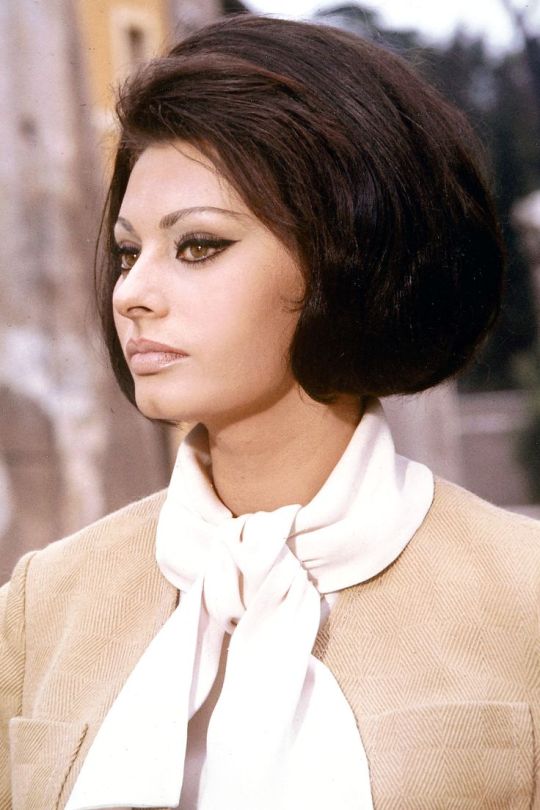




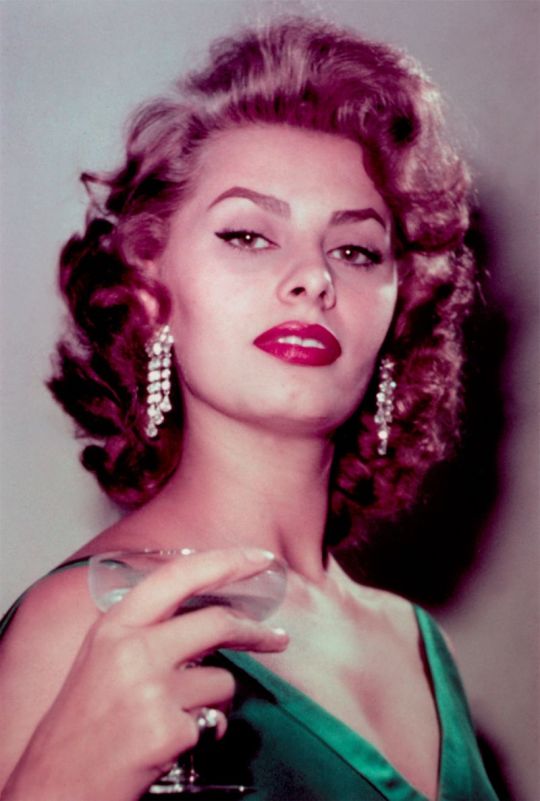
Happy Birthday To Stunning & Legendary Italian Actress Sophia Loren
(Born 20th September 1934)
Pics Sources: Listal.com & Bing Images
#sophia loren#birthday girl#born 20th september 1934#stunning italian actress#stunning redhead#legendary#voluptuous figure#european and hollywood films
63 notes
·
View notes